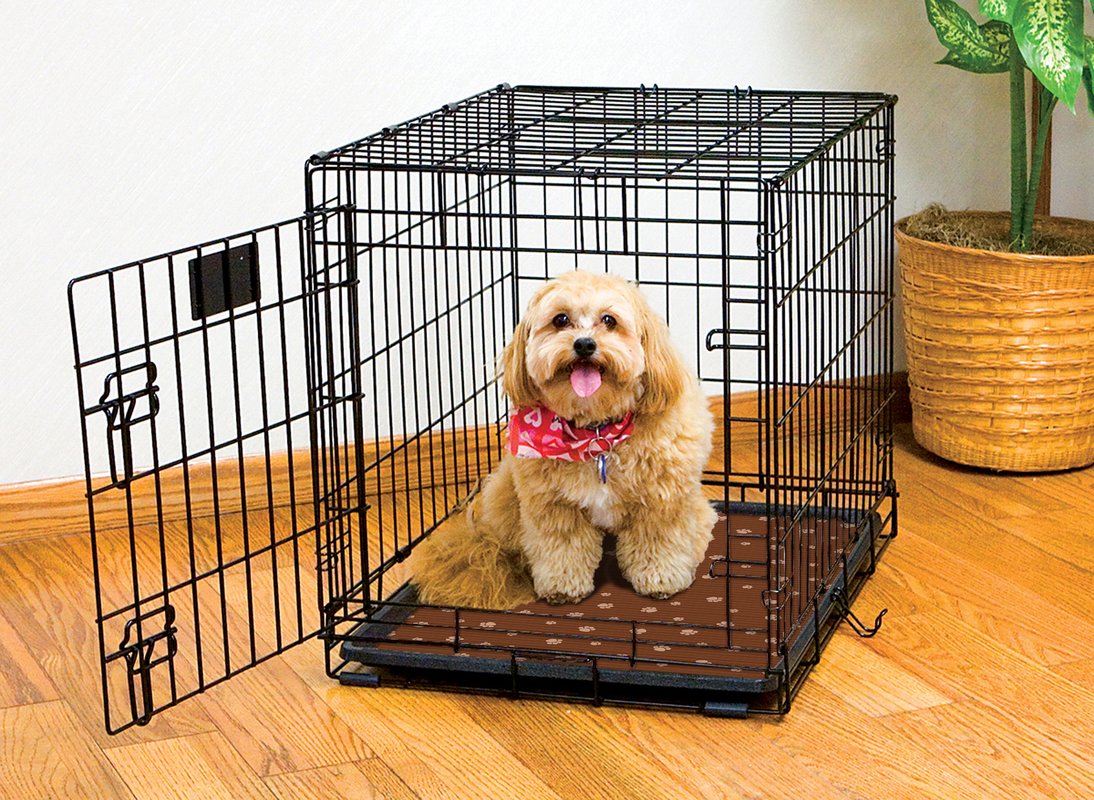how do you crate train a dog

How to Crate Train a Dog
Crate training is a valuable tool for teaching your dog good manners and housebreaking. It can also provide your dog with a safe and comfortable place to relax when you're not home.
This article will teach you everything you need to know about crate training, from how to choose the right crate for your dog to how to introduce your dog to the crate and get them used to spending time in it.

Choosing the Right Crate for Your Dog
The first step in crate training is choosing the right crate for your dog. The crate should be big enough for your dog to stand up, turn around, and lie down comfortably.
If you're not sure how big of a crate you need, measure your dog from the tip of their nose to the base of their tail and add a few inches. You should also make sure that the crate is tall enough for your dog to stand up in without hitting their head on the top.
There are two main types of crates: wire crates and plastic crates. Wire crates are more durable and allow for better ventilation, but they can be more difficult to clean. Plastic crates are lighter and easier to move, but they can be more difficult for your dog to see out of.
Ultimately, the best type of crate for your dog is the one that they're most comfortable in. If you're not sure which type of crate to choose, ask your veterinarian for advice.
Introducing Your Dog to the Crate

Once you've chosen the right crate for your dog, it's time to introduce them to it. The best way to do this is to start by putting the crate in a room where your dog spends a lot of time, such as the living room or bedroom.
Fill the crate with some comfortable bedding, such as a blanket or towel, and leave the door open. Your dog will probably be curious about the crate and will likely want to investigate it. Let them explore the crate at their own pace and don't force them to go inside if they don't want to.
Over time, you can start to close the door to the crate for short periods of time. Start by only closing the door for a few minutes at a time, and gradually increase the amount of time that the door is closed.

It's important to make sure that your dog is comfortable in the crate before you leave them alone in it. If your dog starts to bark or whine when you close the door, you can try giving them a treat or toy to distract them. You can also try leaving the radio on or playing some calming music to help them relax.
Crate Training Tips
Here are a few tips to help you crate train your dog:

- Be patient. Crate training takes time and patience. Don't get discouraged if your dog doesn't catch on right away. Just keep at it and your dog will eventually learn to love their crate.
- Make the crate a positive place. Fill the crate with comfortable bedding and give your dog treats and toys when they're inside. You can also feed your dog their meals in the crate.
- Never use the crate as punishment. The crate should be a safe and comfortable place for your dog, not a place to be punished. If you use the crate as punishment, your dog will start to associate the crate with negative feelings and will be less likely to want to go inside.
- Don't leave your dog in the crate for too long. The maximum amount of time that you should leave your dog in the crate is four hours. If you're going to be gone for longer than four hours, you should make arrangements for someone to let your dog out and take them for a walk.
Crate Training Mistakes to Avoid
Here are a few common mistakes to avoid when crate training your dog:
/crate-training-puppies-2805067_v2-5be49c54c9e77c0051442812.png)
- Starting too early. Don't start crate training your dog until they're at least six weeks old. Younger puppies are not yet old enough to be away from their mothers and littermates for long periods of time.
- Forcing your dog into the crate. Never force your dog into the crate. If your dog doesn't want to go into the crate, don't force them. Just keep working with them and eventually they'll come around.
- Leaving your dog in the crate for too long. The maximum amount of time that you should leave your dog in the crate is four hours. If you're going to be gone for longer than four hours, you should make arrangements for someone to let your dog out and take them for a walk.
- Using the crate as punishment. The crate should be a safe and comfortable place for your dog, not a place to be punished. If you use the crate as punishment, your dog
Thank you for exploring our website by how do you crate train a dog. Your presence fuels our commitment to excellence. Come back for a more enriching experience!
